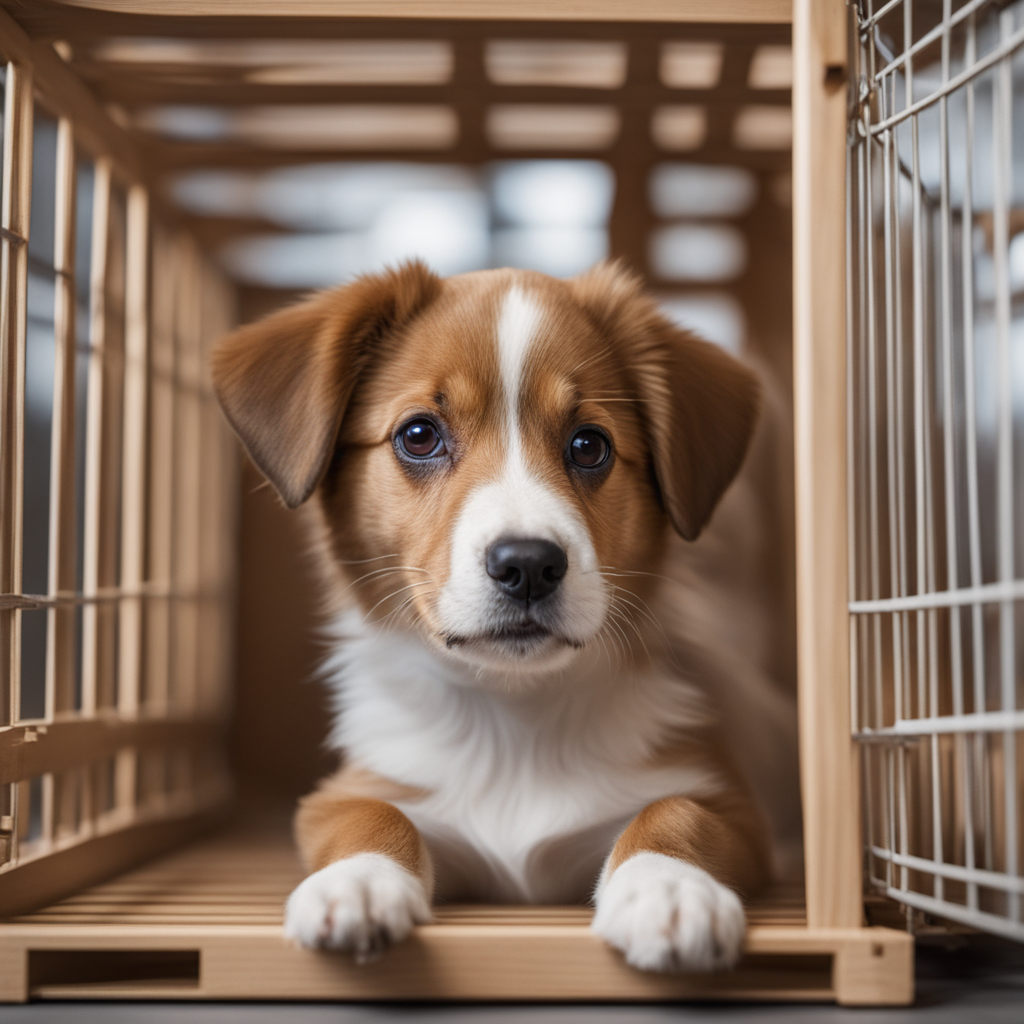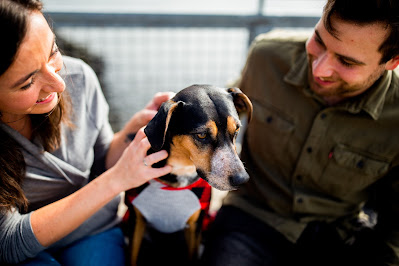How Do I Choose The Right Size Crate For My Dog?
How Do I Choose The Right Size Crate For My Dog: Choosing the right size crate for your dog is essential for their comfort, safety, and well-being. A properly sized crate provides a secure space for your canine companion to relax, sleep, and travel in. But how do you choose the right size crate for your dog? It all starts by measuring your pet and considering its unique needs. In this blog post, we will guide you through the process of selecting the perfect crate for your furry friend, ensuring their comfort and happiness.

Why Choosing the Right Size Crate is Important for Your Dog
As a dog owner, choosing the right size crate for your furry friend is crucial. It’s not just about finding a crate that your dog can fit in, but it’s also about finding a crate that is comfortable, safe, and provides a sense of security for your pup. Here are some reasons why choosing the right size crate is important:
Benefits of Using a Crate
Using a crate can provide a lot of benefits for your dog. For one, it can be a safe space for them to retreat to when they need some alone time or a break from the chaos of the household. It can also be a useful tool for potty training, as dogs are instinctually unlikely to soil in their own space. Additionally, crates can be helpful when traveling with your dog, as they provide a familiar and secure place for your pup to rest.
Consequences of Using an Improperly Sized Crate
On the other hand, using an improperly sized crate can have negative consequences. If the crate is too small, your dog may feel cramped and uncomfortable, leading to anxiety and stress. This can also lead to physical discomfort and even injury if your dog is unable to move around freely or is forced to contort their body to fit. If the crate is too large, your dog may feel exposed and vulnerable, leading to a lack of security and comfort.
It’s important to measure your dog before purchasing a crate and to choose a size that allows them to stand up, turn around, and lay down comfortably. Remember, a crate is meant to be a safe and secure space for your dog, so choosing the right size is crucial for their well-being and happiness.
How to Measure Your Dog for the Right Size Crate
As a pet owner, finding the right size crate for your furry friend is crucial for their safety and comfort during travel or when crate training at home. Measuring your dog is the first step in choosing the perfect size crate. Here is a step-by-step guide on how to measure your dog for the right size crate.
Tools Required for Measuring
Before measuring your dog, you will need a measuring tape, a pen or pencil, and a sheet of paper to record the measurements. Make sure your dog is calm and standing upright for accurate measurements.
Step-by-Step Guide for Measuring Your Dog
Step 1: Measure the length of your dog from the tip of its nose to the base of its tail. Make sure to add two to four inches to the measurement to ensure they have enough room to turn around comfortably.
Step 2: Measure your dog’s height from the floor to the tallest point of its head or ears, whichever is higher. Again, add two to four inches to the measurement for extra headroom.
Step 3: Measure the width of your dog by taking the measurement from the widest part of its body, typically around its ribcage. Add two to four inches to this measurement to ensure they have enough space to move around without feeling cramped.
Step 4: Record the measurements on a piece of paper and use them to determine the appropriate size crate for your dog. Most crates come with size charts to help you choose the right size based on your dog’s measurements.
It is important to note that if your dog is still growing, you may need to purchase a slightly larger crate to accommodate their growth. As always, consult with your veterinarian if you have any questions or concerns about choosing the right crate size for your dog.
Factors to Consider When Choosing a Crate Size for Your Dog
Choosing the right size crate for your dog is crucial for their comfort and safety. Before making a purchase, you need to consider several factors that will help you determine the ideal size for your furry friend. Here are the most important factors to keep in mind:
Age and Size of Your Dog
The first factor to consider when choosing a crate size for your dog is their age and size. Puppies grow fast, and what might seem like the perfect size crate for them today might be too small in a few months. That’s why it’s essential to take into account the breed and estimated size of your dog before making a decision.
For puppies, it’s recommended to get a crate that’s big enough for them to stand, lie down, and turn around comfortably. As they grow, you can upgrade to a larger crate that accommodates their needs better.
Activity Level of Your Dog
The next factor to consider is your dog’s activity level. If your dog is particularly active and loves to move around, a smaller crate might not be ideal for them. They need enough space to stretch and move around, so they don’t feel trapped or frustrated.
On the other hand, if your dog is more relaxed and doesn’t mind spending time in a smaller area, a smaller crate might be a better choice. Just make sure they have enough room to get comfortable and move around a bit if they need to.
Purpose of Using the Crate
The final factor to consider is the purpose of using the crate. If you plan on using it for training, you might want to get a smaller crate that feels more secure and cozy for your dog. On the other hand, if you plan on using the crate for travel or extended periods, a larger crate that accommodates your dog’s needs better might be a better choice.
Remember, the crate should feel like a safe and comfortable space for your dog, not a punishment or a trap. By taking into account your dog’s age, size, activity level, and purpose of using the crate, you can choose the right size that fits their needs perfectly.
Types of Crates and Their Sizes
When it comes to selecting the right crate for your furry friend, it can be overwhelming to choose from various types and sizes available in the market. In this article, we will cover the different types of crates and their sizes to help you make an informed decision.
Plastic Crates
Plastic crates are an excellent choice for dogs who prefer a cozy and den-like environment. They provide a sense of security and privacy and are often used for travel. Plastic crates come in different sizes, and it’s essential to choose the right size according to your dog’s weight and height. It’s crucial to measure your dog’s length from the tip of the nose to the base of the tail and add a few inches to ensure your dog has enough space to move around.
Wire Crates
Wire crates are a popular choice for dog owners as they allow for better ventilation and visibility. Wire crates are ideal for dogs who are prone to overheating or anxiety. These crates come in various sizes, and it’s crucial to choose the right size based on your dog’s weight and height. It’s essential to measure your dog’s length from the tip of the nose to the base of the tail and add a few inches for comfortable movement.
Soft-Sided Crates
Soft-sided crates are lightweight and portable, making them an excellent choice for pet owners who travel frequently. They are ideal for small dogs and puppies and can be used both indoors and outdoors. Soft-sided crates come in various sizes, and it’s important to choose the right size based on your dog’s weight and height. It’s essential to measure your dog’s length from the tip of the nose to the base of the tail and add a few inches for comfortable movement.
Vari-Kennel Crates
Vari-Kennel crates are sturdy and durable, making them an excellent choice for dogs who tend to chew or scratch. They are often used for travel and provide excellent ventilation. Vari-Kennel crates come in different sizes, and it’s crucial to choose the right size based on your dog’s weight and height. It’s essential to measure your dog’s length from the tip of the nose to the base of the tail and add a few inches for comfortable movement.
How Do I Choose The Right Size Crate For My Dog Conclusion
Selecting the right size crate for your furry friend can seem like a daunting task, but with proper guidance, it can be made easy. It’s critical to ensure that your dog feels safe and comfortable in their crate, so taking accurate measurements and considering their breed, size, and weight is crucial.
Remember to choose a crate that is spacious enough to allow your dog to stand up, turn around, and lie down comfortably. You can always opt for a larger crate if you have a puppy or a dog that is still growing. The most important thing is to make sure that your dog’s crate is their safe haven and a place they feel comfortable calling home. By following these simple steps, you can select the perfect crate that your dog will love.
FAQ:
How Do I Choose The Right Size Crate For My Dog?
If you are a new dog owner, you may be wondering how to choose the perfect crate for your furry friend. In this section, we will answer some frequently asked questions to help you find the right size crate for your dog.
What is the right size crate for my dog?
The right size crate for your dog is one where they can comfortably stand up, turn around, and lay down. You don’t want the crate to be too big or too small, as this can cause anxiety or discomfort for your dog. To find the right size, measure your dog from the tip of its nose to the base of its tail, and add a few inches for comfort.
Can I use a crate that is too big for my dog?
No, it is not recommended to use a crate that is too big for your dog. Dogs have a natural instinct to keep their sleeping area clean, and if the crate is too big, they may use one end as a bathroom and sleep on the other end. This can cause discomfort and anxiety for your dog, as well as make house training more difficult.
What if my dog is still growing?
If your dog is still growing, it is recommended to purchase a crate that will fit their adult size. You can use a divider panel to make the crate smaller while they are still growing, and adjust it as they get bigger. This will save you money in the long run, as you won’t need to purchase multiple crates as your dog grows.
What if my dog doesn’t like the crate?
If your dog is hesitant to use the crate, try making it more comfortable and inviting. Add a soft bed or blanket, and place some of their favorite toys or treats inside. You can also try covering the crate with a blanket to create a cozy den-like atmosphere. With patience and positive reinforcement, your dog will learn to love their crate.








